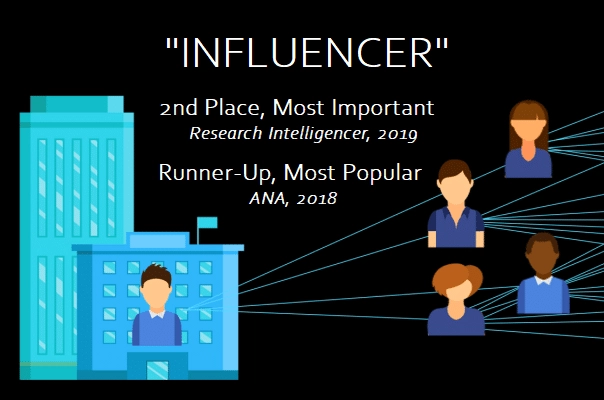As a brand owner and marketer, you may have grown weary thinking about or addressing your influencer strategy.
Yet we believe there's not enough influencer buzz, and that marketing through your fans has finally reached an inflection point: relying on paid influencers is good for some, reaching free influencers may be better for all.
Influencer marketing has grown into a billion-dollar industry. Today marketers find brand fans and typically pay them or offer free product in exchange for promotion. It’s an accepted, well-known practice to pursue influencers who willingly share products or services with others in their social circles, frequently on Facebook, Instagram and YouTube.

Embracing influencers, with reservations
It’s buzzworthy, all right. “Influencer" landed as runner-up for the most popular term cited by national advertisers, losing only to "brand purpose." Meanwhile "influencer" also came in second place, losing to "transparency" in Research Intelligencer's survey of marketers and advertisers.
National advertisers certainly seem committed to influencer marketing. The Association of National Advertisers (ANA) reported that 75 percent of surveyed advertisers were already spending money on influencers last year, and a quarter of the rest planned to begin within a year.
Despite influencer marketing’s stronghold, some 44 percent of advertisers are neutral about its effectiveness and 19 percent believe it doesn’t work. There are marketing specialists and firms devoted to helping marketers manage influencers better, along with newer services to help filter out bad actors with fake followers.
Expanding from paid to free influencer networks
Bigger brands and organizations may have led the way by identifying, engaging, and compensating people who willingly share their products and services. Yet there’s a quieter undercurrent of businesses exploring social influencers who reflect their brands -- and they aren’t motivated by payments or product rewards.
That’s where the shift in influencer buzz begins.
We all know people who enjoy sharing their interests within their online or real-life social circles. They are uncompensated influencers who share experiences and recommendations as “expert” shoppers or consumers. We’ll even call them proselytizers because they naturally advocate and attract their friends, families or colleagues.
Some circle members inevitably react or respond to proselytizers, and share what’s getting discussed with their own connections. Others may be listeners who may not chose to say (or type) a word, though actively consume and take action from what they’ve learned.
Businesses can connect with their “brand communities” by expanding their definition of influencers. Finding supporters who identify with their products or services isn’t only about the loudest influencers: it’s the participants, reactors and listeners who create the critical links as well.
Finding Communities of Interest
To understand how businesses and their influencers ultimately connect, let’s consider the ways people declare their interests.
- Always Searching: People may be driven by passion, repetitive tasks or one-time needs, and google search can’t know for sure. Yet their semantic algorithms offer contextual results that feel relevant.
- Declared Interests: Everyone raises his or her hands digitally to say “we’re in,” and gets joined to others like them. This happens when you sign up on shopping sites or join a social group page.
- Unconscious Coupling: When you’re connected as friends, different circles form based on nodes. You’ll see differences based on how you know people and get exposed to their interests.
While it’s entirely possible to search or browse around for business brands, related reviews, discussion and questions, how people feel about the brands will dictate their decision to buy from them.
Consumers not only rely on what is getting said in their social circles, they also need to trust brands themselves -- and digital discussion will take place whether the business is involved directly or not. The imperative for establishing a two-way communication and reaching people who have discovered you is what’s required in the direct-to-consumer era.
Influencer buzz isn’t overused or overplayed at all. In fact, it’ll likely continue to grow as we approach the new era in which businesses push beyond paid proselytizers. This new approach to supporters challenges our notions of how to connect with them, simply as a part of communications, marketing and good business.
Influencer Marketing is changing and going mainstream. #RealPeopleWantToHelpPromote
by Debby Richman, Aug-10-2019
